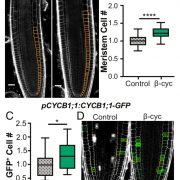
β-cyclocitral, a novel regulator of root growth ($) (PNAS)
Root growth and branching have essential roles in nutrient and water uptake, and are common targets in crop improvement. Dickinson et al. looked for novel apocarotenoids involved in root development and found that dihydroactinidiolide (DHAD) and β-cyclocitral increase lateral root (LR) branching in…
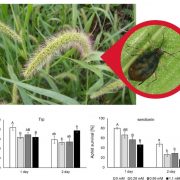
Characterizing the serotonin biosynthesis pathway upon aphid infestation in Setaria viridis leaves (bioRxiv)
In response to biotic stresses, plants produce chemical defenses to reduce damage. Adaptations to insect infestation involve synthesis of Trp-derived metabolites, leading to metabolome alterations. Here, Dangol et al. analyzed the transcriptomic and metabolomic effects after herbivore feeding in Setaria…

Using “Scientists Who Selfie” to disrupt stereotypes of scientists (PLOS One)
Public engagement has been a long-term challenge for scientists. The rise of social media has generated a novel avenue for connecting with a wider audience; however, many scientists walk a fine line between being personal and professional, often posting images of their work but not themselves. A recent…
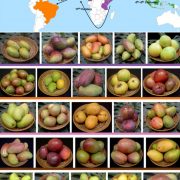
Population genomic analysis of mango suggests a complex history of domestication ($) (New Phytol)
Mango trees have been cultivated for approximately 4000 years which places their domestication in the same timeline as that of walnut, peach, sweet orange, lychee, citron, sweet orange, lemon, and jujube. Throughout the process of domestication, most crops undergo severe bottlenecks which decrease genetic…
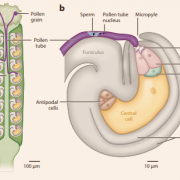
Review: A fruitful journey: Pollen tube navigation from germination to fertilization ($)
When pollen is deposited on a flower’s stigma, pollen tubes penetrate the stigma and elongate towards ovules where two non-motile sperm will double fertilize an egg and a central cell, which requires cooperation between many cell types. Johnson et al. review our current understanding of these processes.…

Reflections on Classics: Plant Cell‘s 30th anniversary
“The 1980s were an exciting and revolutionary time for biology, and plant molecular biology in particular,” begins an editorial by Bob Goldberg, Brian Larkins, and Ralph Quatrano, the three Founding Editors of The Plant Cell. They describe why the American Society of Plant Physiologists (ASPP; later,…
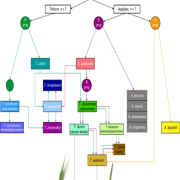
Wheat exome sequencing and wheat ancestry (Nature Genetics)
Wheat is of course a hugely important food for humans, and has been selectively bred across the globe for millennia. Modern bread wheats are hexaploid and contain three distinct subgenomes (AABBDD). As with other crops, there is a need to understand wheat’s ancestry and explore the greater genetic…
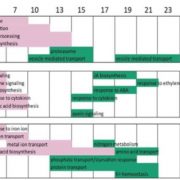
Identification of transcription factors regulating senescence in wheat through gene regulatory network modelling (Plant Physiol)
Like other seed crops, wheat yields depend in part on the efficiency with which nutrients stored in leaves are mobilized into the developing seeds. This depends on the several processes from macromolecule breakdown to transport, as well as the timing of leaf senescence. Borrill et al. used RNA analysis…
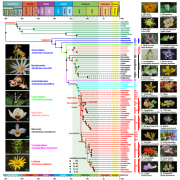
Origin of angiosperms and the puzzle of the Jurassic gap (Nature Plants)
Understanding the origin and evolution of flowering plants is key to explaining the development of major terrestrial ecosystems. The rapid diversification of angiosperms into over 360,000 extant species was famously termed ‘an abominable mystery’ by Charles Darwin. Here, Li et al reconstruct the…

